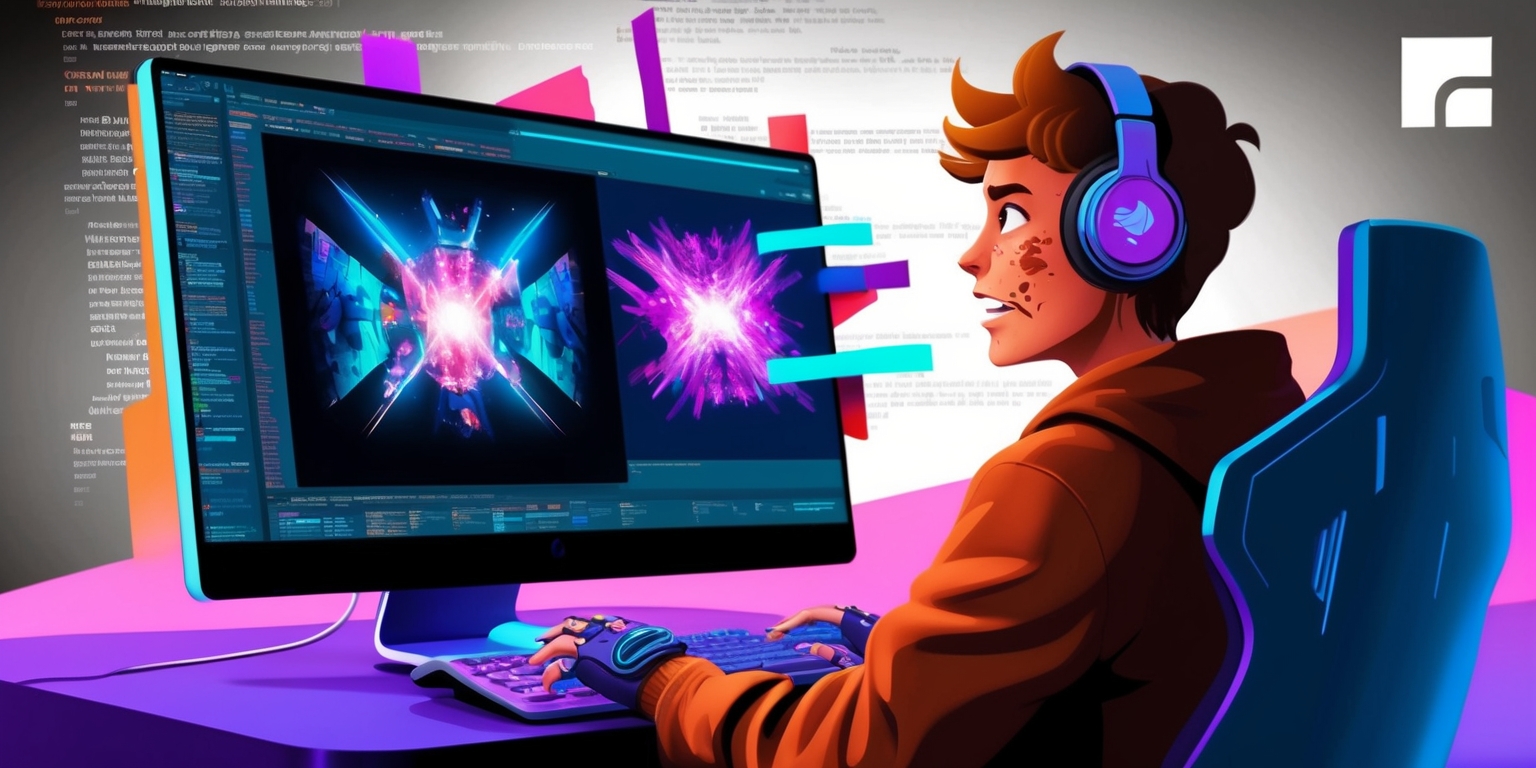Echoes of Aspiration: Deconstructing the Vision and Reality of Gaming Demos
Sep-23-2025

The world of video game presentations is full of layered strategies, audacious promises, and behind-the-scenes maneuvers. A notable moment in this realm unfolded two decades ago, when a much-hyped showcase was presented as a demonstration of a new console's prowess. Despite the impressive imagery and cinematic production, insiders later revealed that the demonstration was more an artistic ambition than a preview of tangible gameplay. This event remains a point of discussion among industry veterans and gaming enthusiasts, highlighting the high stakes, high expectations, and occasional discrepancies between demo footage and the actual product experience.
Reimagining Promotional Spectacles in Gaming
The evolution of promotional events in gaming has regularly obscured the distinctions between performance art and actual gameplay demonstration. Innovative marketing teams craft visually striking presentations, sometimes transcending what is technically achievable on current hardware. This case presents an excellent study of how studios manufacture an almost movie-like experience intended to captivate audiences. Distinct from the typical teaser moments, the elaborate renderings were Crafted not merely to dazzle but equally to serve set an ambitious benchmark for future developments. The creative intent was clear: produce an asset that becomes a reference point, even if the final product does not fully replicate those visuals. Audience expectations are raised high, and the delicate balance between art and technology becomes a central theme in modern game marketing.
Artistry Behind Target Renders and Real Gameplay
Behind every meticulously crafted render lies an intricate interplay between artistic vision and engineering constraints. The phenomenon of target renders, as illustrated by the infamous demonstration, showcases an idealized snapshot of potential that never fully translated into true gameplay. The process involves leveraging pre-rendered scenes that capture dynamic lighting, shading, and environmental details, envisioning a future where these can dawn in real time. Yet, the technical intricacies of game engines sometimes prove challenging to reconcile with these high-fidelity images. The curated narrative sought to illustrate the forthcoming console's power but instead encapsulated a dream rather than a deliverable. Fans and experts alike were quick to notice the disparity, underscoring the fine line between visually arresting concept art and the actual execution of interactive experiences.
A Retrospective on Industry Rivalries and Demonstration Tactics
The strategic rivalry among console makers has long influenced the way vendors present their new offerings to the market. Historical encounters, notably those involving Sony’s ambitious displays, reveal a legacy of bold claims and high-energy demonstrations. One striking example revolves around the approach of using advanced, non-interactive renderings to highlight the capabilities of a forthcoming system. Compared to a more measured, playable presentation, these demos adopted a style that aimed to rewrite expectations. Veteran industry leaders recalled similar tactics from past console eras, emphasizing that such moves were not isolated events but part of a long-standing competition. The interplay of corporate ambition and technological storytelling has left a memorable imprint on the gaming industry’s narrative, inspiring both admiration and skepticism among critics.
Insights from the Inner Circles of Console Development

Industry insiders often possess a unique lens through which to view the gap between demonstration and reality. Anecdotes from seasoned professionals underscore that the dazzling showcases sometimes served a double purpose – attracting buzz and setting high internal goals. These behind-the-scenes revelations expose the pressures contributing to exaggerated presentations. Past experiences, detailed by figures with long tenures at major companies, indicate a pattern of employing visually compelling content even if it meant departing from strictly genuine gameplay elements. The craft of orchestrated presentation relies heavily on the calculated manipulation of audience perception. While the public sees a snapshot of potential, only the creators are aware of the compromises and technical hurdles that define the transition from cinematic vision to a playable, interactive experience.
Deconstructing the Promise of Next-Generation Experiences
At the heart of every forward-looking demo lies the promise of unprecedented graphic fidelity and immersive interactivity. However, the practice of presenting a near-perfect target render can lead to public disillusionment when the actual product does not match its preview. The demonstration in question provided a vivid example of how the gap between aspiration and reality can widen during development. The curated portrayal aimed to exploit the mythical quality of next-generation hardware, capturing imaginations with displays that resembled high-budget cinematic sequences. Nevertheless, when the final game emerged, it became evident that the fantastical vision was an aspirational, rather than entirely representative, depiction. This phenomenon encourages a deeper analysis of how far laboratories of creativity can impact consumer expectations and ultimately shape market dynamics.
Strategic Maneuvering in the Competitive Console Landscape
At a time when consoles are not only platforms for entertainment but also symbols of technological supremacy, strategic demonstrations take on added significance. The method of showcasing refined visuals, even if rendered outside of an interactive engine, served as both a distraction and a subliminal message to the competition. This careful orchestration is designed to position a new console as the future standard, eclipsing its rivals at key moments in the market cycle. Notably, industry leaders have cited similar maneuvers in previous platform wars, where the allure of a polished demonstration could significantly tilt consumer sentiment. The interplay between marketing tactics and genuine system capabilities forms a recurring narrative that continues to ripple through industry debates, influencing everything from investor confidence to fan loyalty.
Exclusive Content and Its Role in Market Dynamics
The acquisition of exclusive gaming titles has long been a potent strategy, and in this context, it played a significant role alongside the famed demonstration. By securing highly anticipated experiences, companies effectively cement their consoles as must-have entertainment hubs. Exclusive deals create an ecosystem where the console transcends being merely a piece of hardware but a gateway to a curated library of experiences. These arrangements showcase how a strategic blend of marketing prowess, technological ambition, and exclusive content fosters differentiation among competing platforms. When the device finally entered the living rooms of users, the exclusivity of certain high-profile games added substantial weight to the overall narrative of what each console had to offer. This multifaceted approach further complicated the battle for market leadership in an ever-evolving digital landscape.
Crafting the Cinematic Experience in Gaming Trailers
The production values seen in game demonstrations often borrow heavily from the techniques found in blockbuster filmmaking. This is particularly evident in presentations that utilize cinematic camera angles, elaborate cut scenes, and detailed environmental modeling. The demo in question utilized these techniques to generate excitement and lofty expectations among its audience. Here, the emphasis was on creating an unforgettable visual journey that celebrated an idealized gameplay narrative, even if it was far removed from the interactive experience. These segments are designed to resonate emotionally with fans, leveraging the power of storytelling to mask any technical shortcomings. Such presentations reflect the modern intersection of gaming and cinema, where the process of creation involves a careful narrative construction meant to capture the imaginations of millions worldwide.
Evaluating the Role of Critical Voices and Market Reaction
Journalists and industry commentators play a key role in interpreting the intentions behind these grand demonstrations. Their analysis often sheds light on the gap between a teaser’s artistic flair and actual system performance. Experienced commentators quickly discerned when a presentation was more a product of visionary design rather than a faithful depiction of gameplay mechanics. The early skepticism expressed by seasoned observers underscored the reliability of critical voices in the gaming arena. Through their informed insights, the wider audience was gradually made aware that certain expectations might be more aspirational than realistic. This dynamic demonstrates the influential role that critics and analysts have in moderating the sometimes excessively optimistic narratives pushed by corporate marketing strategies, thus shaping consumer perception over the long term.
Examining the Impact of High-Profile Game Releases
The influence of landmark game releases in defining a console’s legacy cannot be underestimated. The highly anticipated demonstrations serve as the prelude to a launch that often relies on star titles to bond with the consumer base. Notably, flagship franchises have sometimes built their success on the momentum generated by such previews. The interplay between the promise of groundbreaking visuals and the eventual realities of gameplay tends to drive community discussion, media analysis, and even shifts in consumer confidence. These high-profile releases become the testing ground for a console’s technological validity in the eyes of both fans and the industry. Even as the initial buzz settles, the legacy of those presentations continues to inform how subsequent titles and innovations are scrutinized and celebrated across the competitive gaming landscape.
Tracing the Evolution of Tech-Driven Marketing in Gaming
The progression of gaming technology has been paralleled by a significant evolution in marketing techniques. Early demonstrations provided a canvas for visual storytelling, relying on the creative freedom offered by pre-rendered scenes. Over time, as hardware capabilities have advanced, the expectations for realism and interactivity have grown exponentially. The discussed demonstration became emblematic of a transitional period where the pursuit of awe-inspiring visuals sometimes overtook the commitment to a fully functional, interactive experience. This shift invites a broader conversation about how advances in graphics technology, coupled with increased user expectations, have led to an ongoing dialogue about what constitutes a genuine product preview. The interplay between future aspirations and present realities remains a cornerstone issue in tech-driven marketing strategies within this dynamic industry.







